Nafas x Pinhome: How to improve air quality at home?
All living things need clean air to breathe and survive. This need, however, is becoming increasingly challenging to meet. Air that is genuinely 'clean' and 'healthy' is becoming increasingly scarce.
The growing economic activity is one of the factors influencing air quality. These activities continue to generate air pollution containing PM2.5, particles less than 2.5 micrometers in diameter, which are harmful because they can enter the lungs and cause bad impacts.
The World Health Organization (WHO) updated the guidelines in 2021 to state that the annual average concentration of PM2.5 should not exceed 5 µg/m3. Unfortunately, Jakarta's air quality is always above the predetermined limit – you can learn more about PM2.5 by reading this.
How is good air quality explained?
You can easily find the air quality through the Air Quality Index (AQI) which measures how clean or polluted the air is in a specific location. The AQI is a global measurement method that ranges from 0 at the low end to 500 at the high end. A higher AQI indicates increased air pollution and a negative impact on our health. It is color-coded and divided into six categories. Each category represents a different level of health concern, and the colors help people quickly determine the air quality in their area.
The AQI scale looks like this:
How is the air quality in the 5 Jabodetabek areas?
Undeniably, the air quality in Jakarta, Bogor, Depok, Tangerang, and Bekasi varies significantly at different times. It can range from "Moderate" to "Unhealthy” in some areas.
Based on research by Nafas and Pinhome - an e-commerce platform for end-to-end property transactions - this is a list of Jabodetabek locations with near-good or moderate outdoor air quality.
Depok Beji
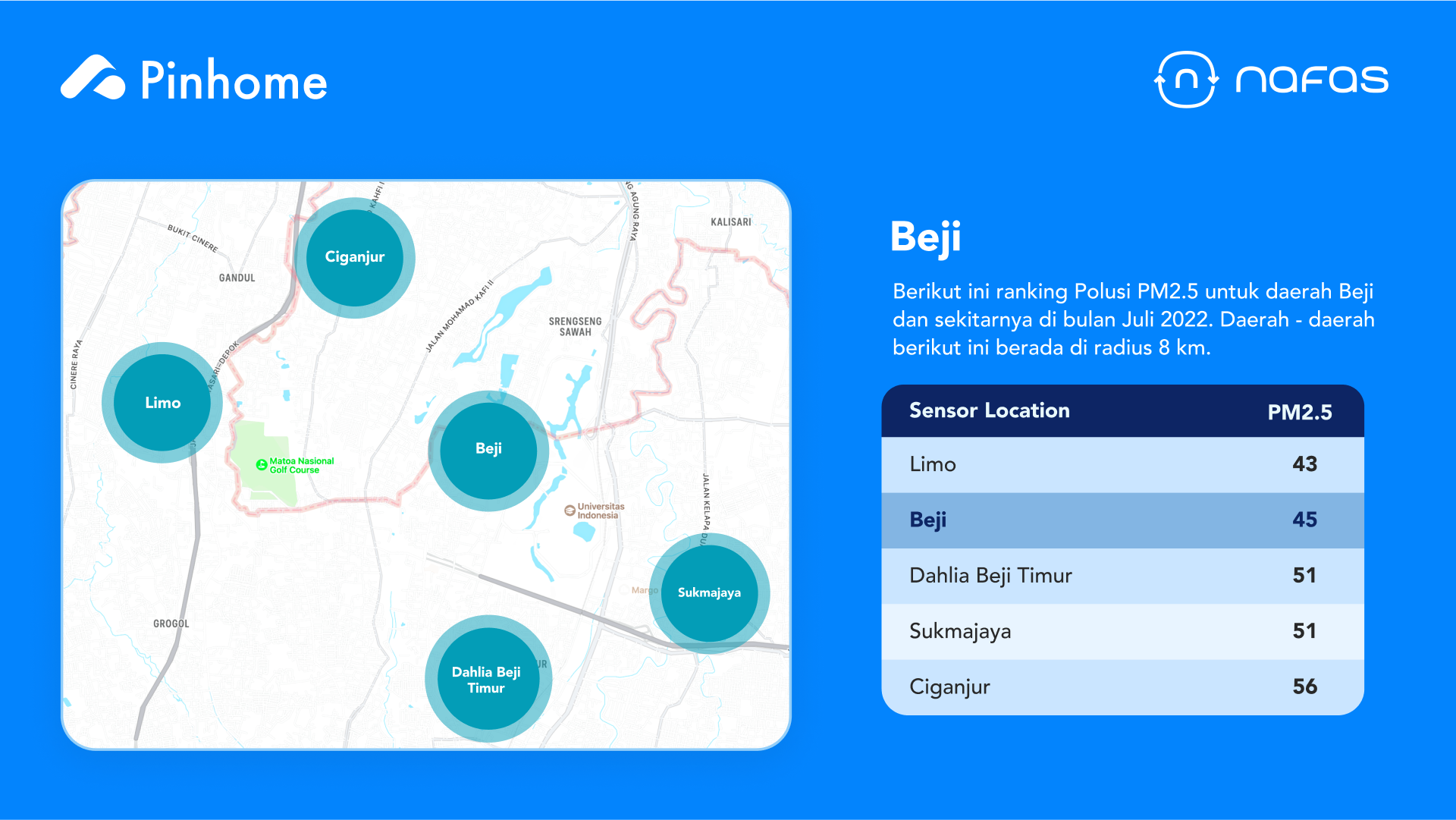
Based on the information above, Beji areas have PM2.5 pollution indicators that are classified as Unhealthy for Sensitive Groups. In the surrounding area with a radius of 8 km, the highest air pollution is in Ciganjur with a concentration of 56 µg/m3, while the lowest air pollution is in Limo with a concentration of 43 µg/m3.
Pondok Indah
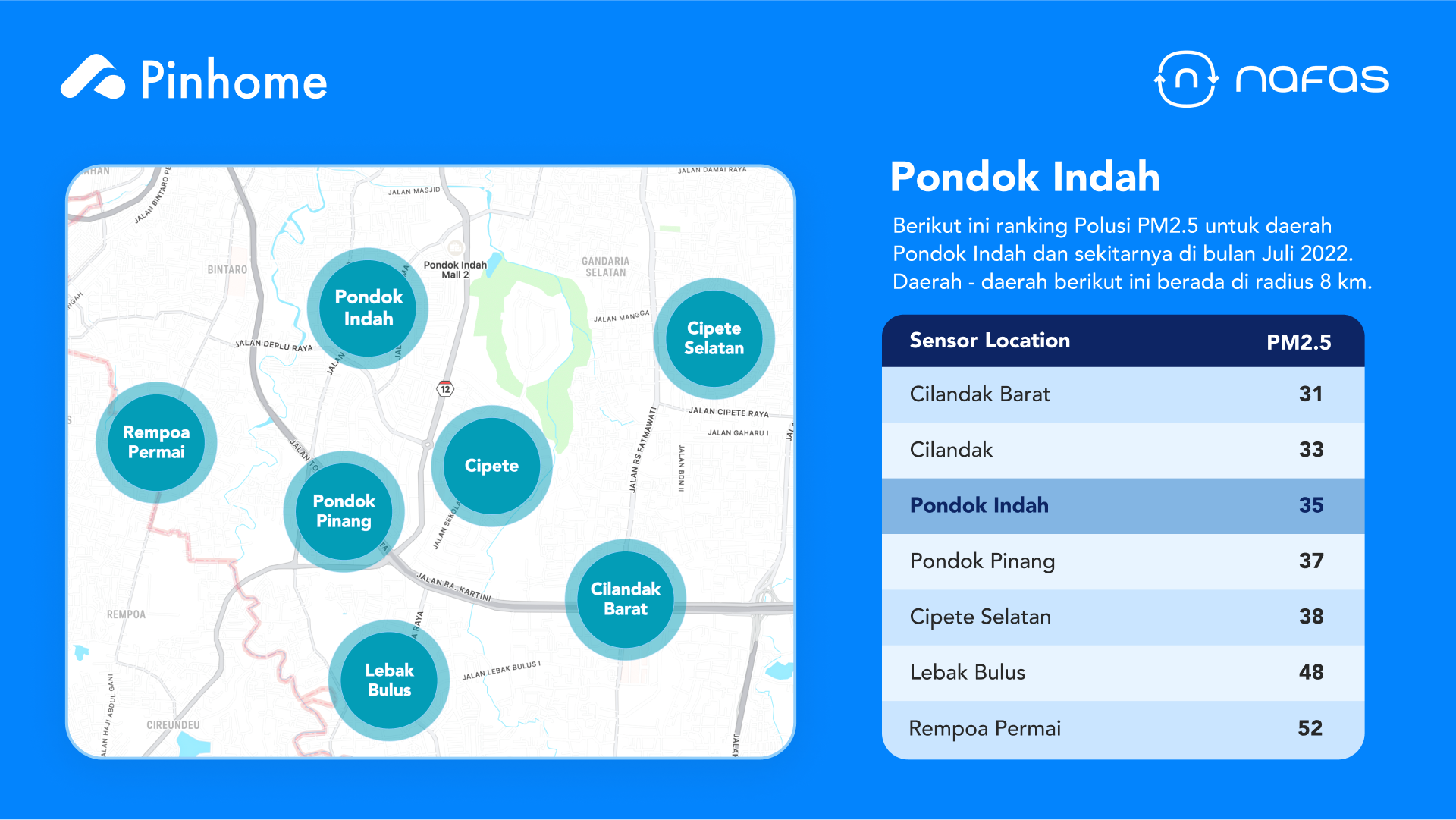
Based on the information above, Pondok Indah areas have PM2.5 pollution indicators that are classified as moderate. In the surrounding area with a radius of 8 km, the highest air pollution is in Rempoa Permai with a concentration of 52 µg/m3, while the lowest air pollution is in Cilandak Barat with a concentration of 31 µg/m3.
Bogor Barat
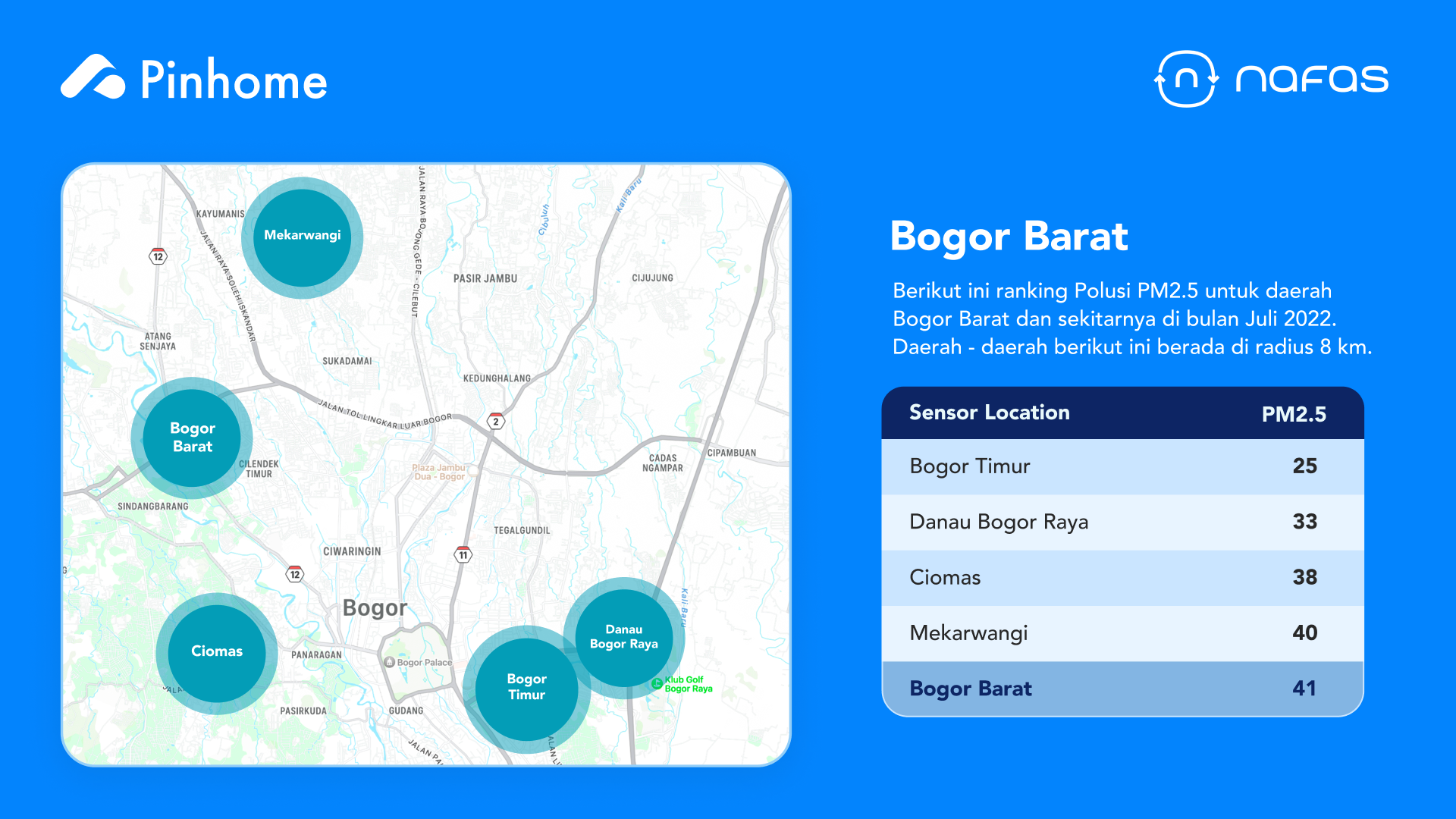
Based on the information above, Bogor Barat areas have PM2.5 pollution indicators that are classified as Unhealthy for Sensitive Groups. In the surrounding area with a radius of 8 km, the highest air pollution is in Mekarwangi with a concentration of 40 µg/m3, while the lowest air pollution is in Bogor Timur with a concentration of 25 µg/m3.
Bekasi, Tambun Selatan
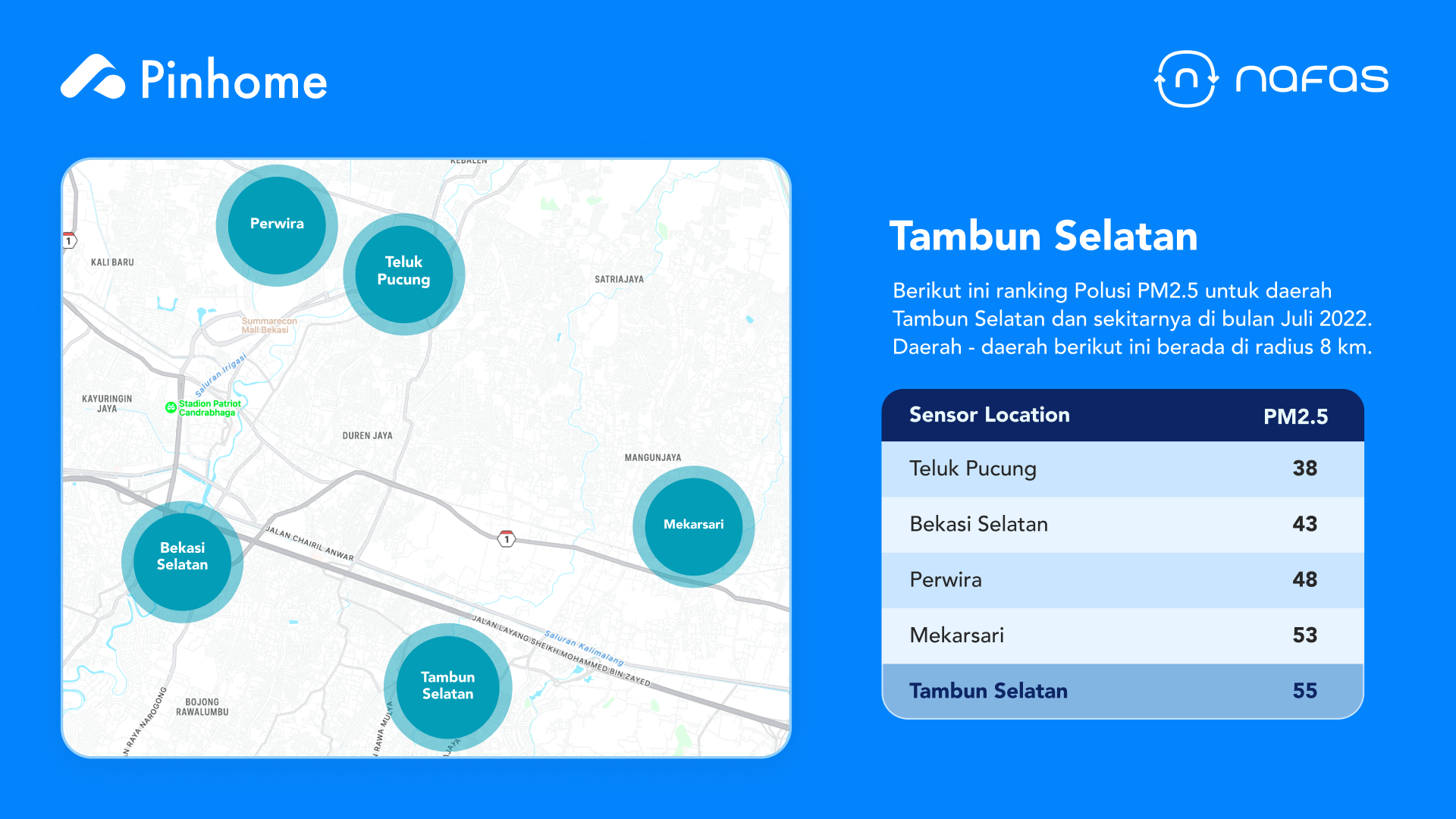
Based on the information above, Tambun Selatan areas have PM2.5 pollution indicators that are classified as Unhealthy for Sensitive Groups. In the surrounding area with a radius of 8 km, the highest air pollution is in Mekarsari with a concentration of 53 µg/m3, while the lowest air pollution is in Teluk Pucung with a concentration of 38 µg/m3.
Dharmawangsa
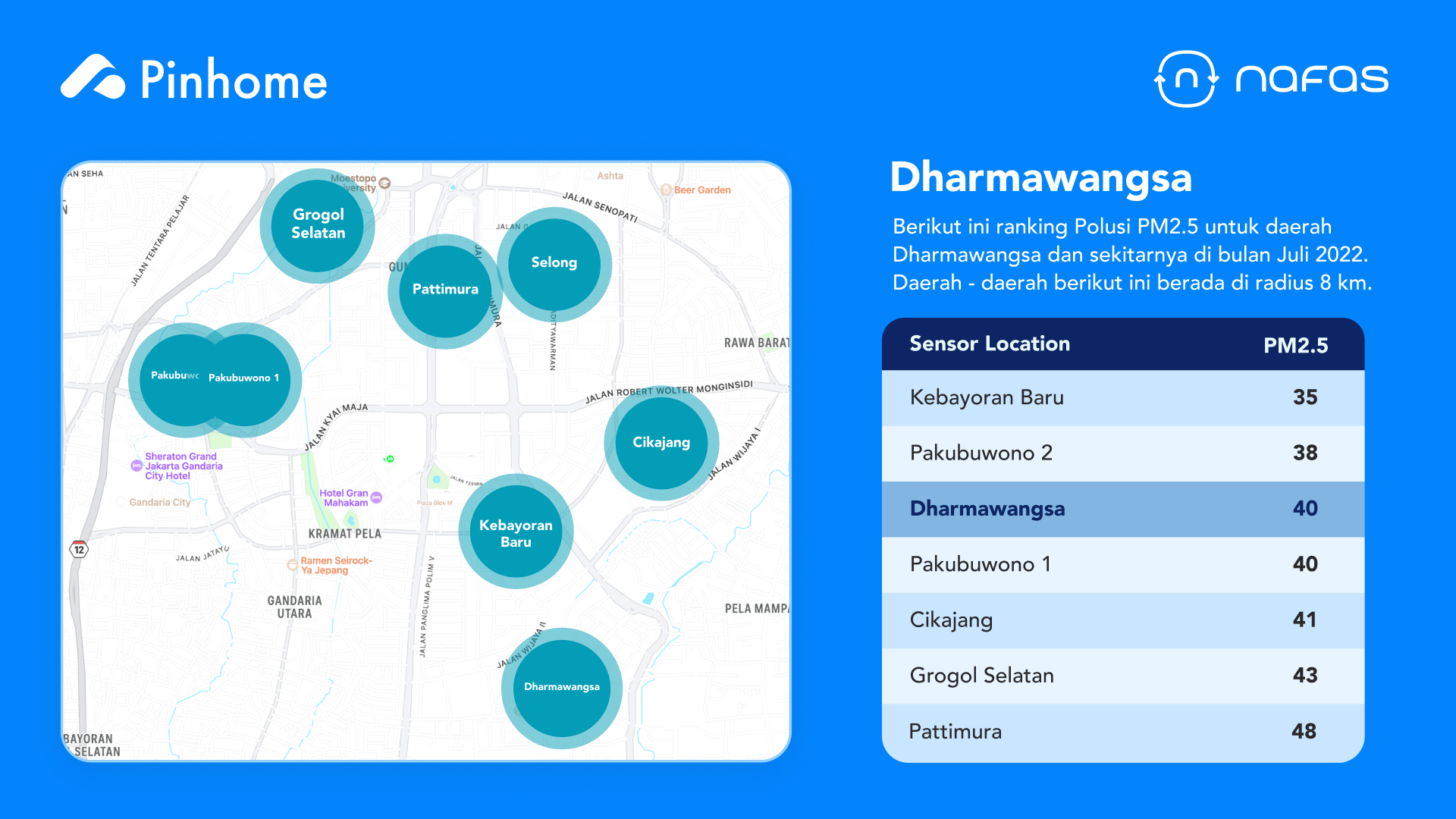
Based on the information above, Dharmawangsa areas have PM2.5 pollution indicators that are classified as Unhealthy for Sensitive Groups. In the surrounding area with a radius of 8 km, the highest air pollution is in Pattimura with a concentration of 48 µg/m3, while the lowest air pollution is in Kebayoran Baru with a concentration of 35 µg/m3.
Does the outdoor air quality determine the indoor air quality?
PM2.5 has the ability to enter a room invisibly. According to one study, 54-63% of PM2.5 pollutants inside buildings come from outside, even when windows and doors are closed. Another study found that outside particles account for 80% of indoor PM2.5 concentrations on average, with a range of 40-100% in private residences.
Outdoor air pollution can enter a room via cracks in the walls, floors, and ceilings around windows and doors, as well as open windows and doors. The movement of air into buildings is aided by wind and temperature differences between indoor and outdoor air. Furthermore, particulates can enter through exhaust fans in bathrooms, kitchens, and underground parking garages. Hence, indoor air quality can be affected by outdoor air quality.
Can I improve the indoor air quality while the outdoor one is not that good?
Although exposure to air pollution is difficult to avoid, you can still overcome poor air quality at home. You can start by regularly checking the outdoor air quality through the Nafas app so that you know what to do next. If the outdoor air is good, you can open your windows and doors to recirculate the indoor and outdoor air. However, when the outdoor air is bad, you can close your windows and doors, do indoor activities, and turn on the air purifier to clean the air in the room. You can also reduce activities that make indoor air pollution worse, such as cooking and using mosquito coils.
Nafas also has a Ventilation Alert that can tell you when it's the right time to open your home's vents. Read here to maximize your experience with the Nafas app.